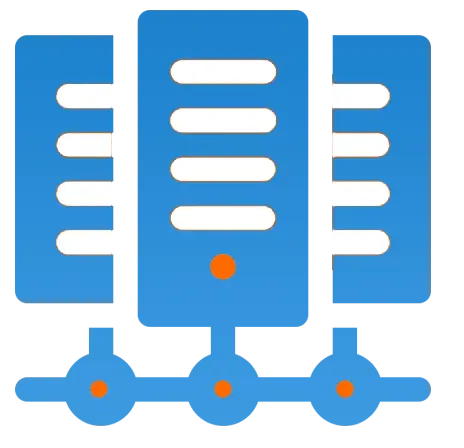Get 69% Off on Cloud Hosting : Claim Your Offer Now!
- Products
-
Compute
Compute
- Predefined TemplatesChoose from a library of predefined templates to deploy virtual machines!
- Custom TemplatesUse Cyfuture Cloud custom templates to create new VMs in a cloud computing environment
- Spot Machines/ Machines on Flex ModelAffordable compute instances suitable for batch jobs and fault-tolerant workloads.
- Shielded ComputingProtect enterprise workloads from threats like remote attacks, privilege escalation, and malicious insiders with Shielded Computing
- GPU CloudGet access to graphics processing units (GPUs) through a Cyfuture cloud infrastructure
- vAppsHost applications and services, or create a test or development environment with Cyfuture Cloud vApps, powered by VMware
- Serverless ComputingNo need to worry about provisioning or managing servers, switch to Serverless Computing with Cyfuture Cloud
- HPCHigh-Performance Computing
- BaremetalBare metal refers to a type of cloud computing service that provides access to dedicated physical servers, rather than virtualized servers.
-
Storage
Storage
- Standard StorageGet access to low-latency access to data and a high level of reliability with Cyfuture Cloud standard storage service
- Nearline StorageStore data at a lower cost without compromising on the level of availability with Nearline
- Coldline StorageStore infrequently used data at low cost with Cyfuture Cloud coldline storage
- Archival StorageStore data in a long-term, durable manner with Cyfuture Cloud archival storage service
-
Database
Database
- MS SQLStore and manage a wide range of applications with Cyfuture Cloud MS SQL
- MariaDBStore and manage data with the cloud with enhanced speed and reliability
- MongoDBNow, store and manage large amounts of data in the cloud with Cyfuture Cloud MongoDB
- Redis CacheStore and retrieve large amounts of data quickly with Cyfuture Cloud Redis Cache
-
Automation
Automation
-
Containers
Containers
- KubernetesNow deploy and manage your applications more efficiently and effectively with the Cyfuture Cloud Kubernetes service
- MicroservicesDesign a cloud application that is multilingual, easily scalable, easy to maintain and deploy, highly available, and minimizes failures using Cyfuture Cloud microservices
-
Operations
Operations
- Real-time Monitoring & Logging ServicesMonitor & track the performance of your applications with real-time monitoring & logging services offered by Cyfuture Cloud
- Infra-maintenance & OptimizationEnsure that your organization is functioning properly with Cyfuture Cloud
- Application Performance ServiceOptimize the performance of your applications over cloud with us
- Database Performance ServiceOptimize the performance of databases over the cloud with us
- Security Managed ServiceProtect your systems and data from security threats with us!
- Back-up As a ServiceStore and manage backups of data in the cloud with Cyfuture Cloud Backup as a Service
- Data Back-up & RestoreStore and manage backups of your data in the cloud with us
- Remote Back-upStore and manage backups in the cloud with remote backup service with Cyfuture Cloud
- Disaster RecoveryStore copies of your data and applications in the cloud and use them to recover in the event of a disaster with the disaster recovery service offered by us
-
Networking
Networking
- Load BalancerEnsure that applications deployed across cloud environments are available, secure, and responsive with an easy, modern approach to load balancing
- Virtual Data CenterNo need to build and maintain a physical data center. It’s time for the virtual data center
- Private LinkPrivate Link is a service offered by Cyfuture Cloud that enables businesses to securely connect their on-premises network to Cyfuture Cloud's network over a private network connection
- Private CircuitGain a high level of security and privacy with private circuits
- VPN GatewaySecurely connect your on-premises network to our network over the internet with VPN Gateway
- CDNGet high availability and performance by distributing the service spatially relative to end users with CDN
-
Media
-
Analytics
Analytics
-
Security
Security
-
Network Firewall
- DNATTranslate destination IP address when connecting from public IP address to a private IP address with DNAT
- SNATWith SNAT, allow traffic from a private network to go to the internet
- WAFProtect your applications from any malicious activity with Cyfuture Cloud WAF service
- DDoSSave your organization from DoSS attacks with Cyfuture Cloud
- IPS/ IDSMonitor and prevent your cloud-based network & infrastructure with IPS/ IDS service by Cyfuture Cloud
- Anti-Virus & Anti-MalwareProtect your cloud-based network & infrastructure with antivirus and antimalware services by Cyfuture Cloud
- Threat EmulationTest the effectiveness of cloud security system with Cyfuture Cloud threat emulation service
- SIEM & SOARMonitor and respond to security threats with SIEM & SOAR services offered by Cyfuture Cloud
- Multi-Factor AuthenticationNow provide an additional layer of security to prevent unauthorized users from accessing your cloud account, even when the password has been stolen!
- SSLSecure data transmission over web browsers with SSL service offered by Cyfuture Cloud
- Threat Detection/ Zero DayThreat detection and zero-day protection are security features that are offered by Cyfuture Cloud as a part of its security offerings
- Vulnerability AssesmentIdentify and analyze vulnerabilities and weaknesses with the Vulnerability Assessment service offered by Cyfuture Cloud
- Penetration TestingIdentify and analyze vulnerabilities and weaknesses with the Penetration Testing service offered by Cyfuture Cloud
- Cloud Key ManagementSecure storage, management, and use of cryptographic keys within a cloud environment with Cloud Key Management
- Cloud Security Posture Management serviceWith Cyfuture Cloud, you get continuous cloud security improvements and adaptations to reduce the chances of successful attacks
- Managed HSMProtect sensitive data and meet regulatory requirements for secure data storage and processing.
- Zero TrustEnsure complete security of network connections and devices over the cloud with Zero Trust Service
- IdentityManage and control access to their network resources and applications for your business with Identity service by Cyfuture Cloud
-
-
Compute
- Solutions
-
Solutions
Solutions
-
 Cloud
Hosting
Cloud
Hosting
-
 VPS
Hosting
VPS
Hosting
-
GPU Cloud
-
 Dedicated
Server
Dedicated
Server
-
 Server
Colocation
Server
Colocation
-
 Backup as a Service
Backup as a Service
-
 CDN
Network
CDN
Network
-
 Window
Cloud Hosting
Window
Cloud Hosting
-
 Linux
Cloud Hosting
Linux
Cloud Hosting
-
Managed Cloud Service
-
Storage as a Service
-
 VMware
Public Cloud
VMware
Public Cloud
-
 Multi-Cloud
Hosting
Multi-Cloud
Hosting
-
 Cloud
Server Hosting
Cloud
Server Hosting
-
 Bare
Metal Server
Bare
Metal Server
-
 Virtual
Machine
Virtual
Machine
-
 Magento
Hosting
Magento
Hosting
-
Remote Backup
-
 DevOps
DevOps
-
 Kubernetes
Kubernetes
-
 Cloud
Storage
Cloud
Storage
-
NVMe Hosting
-
 DR
as s Service
DR
as s Service
-
-
Solutions
- Marketplace
- Pricing
- Resources
- Resources
-
By Product
Use Cases
-
By Industry
- Company
-
Company
Company
-
Company
10 Tips for Reducing Latency in Cloud Based Applications
Table of Contents
- Choose the Right Cloud Hosting Provider
- Use Content Delivery Networks (CDNs)
- Optimize Server Locations
- Implement Caching Mechanisms
- Minimize Data Transfers
- Use Asynchronous Processing
- Optimize Database Queries
- Enable HTTP/2 and Keep-Alive Connections
- Monitor and Upgrade Server Resources
- Implement Load Balancing
- Conclusion
Did you know that even a 1-second delay in response time can lead to a 16% drop in customer satisfaction? And just not that! According to a study by Amazon, just a 100-millisecond delay can reduce conversion rates by 7%. In cloud based applications, every second counts. High latency means frustrated users, lost customers, and poor app performance. But don’t worry — there are simple ways to tackle this.
This blog will provide you with the top 10 tips to reduce latency in cloud based applications. If you want your cloud apps to stay ahead of the competition, keep reading — faster load times are just a few steps away!
Choose the Right Cloud Hosting Provider
Why this matters: Not all cloud hosting providers offer the same level of infrastructure, network speed, and data center locations. If your hosting provider has limited global reach, your application may experience high latency for users far from the server.
Solution: Choose a cloud hosting provider with a global network of data centers and strong infrastructure. Providers like AWS, Google Cloud, and Microsoft Azure offer scalable options that let you deploy servers closer to your users, improving response times.
Use Content Delivery Networks (CDNs)
Why this matters: Delivering content from a single server unit location can result in delays for users located far from that server. This is especially problematic for applications with a global user base.
Solution: A CDN caches and distributes content to multiple servers around the world. When users access your application, they receive data from the nearest CDN server, reducing the travel distance and latency. CDNs are particularly effective for serving static content like images, videos, and scripts.
Optimize Server Locations
Why this matters: When your servers are far away from your users, it increases the time needed to transmit data. This distance-based delay is known as network latency.
Solution: Deploy your servers in regions where the majority of your users are located. For global applications, consider multi-region deployments to ensure users get served from the closest server. This helps minimize latency and improves overall application responsiveness.
Implement Caching Mechanisms
Why this matters: Every time a user requests data from your application, the server must process and retrieve it, which can take time, especially for repeated queries.
Solution: Implement caching at multiple levels, such as browser caching, server-side caching, or CDN caching. Frequently accessed data is stored temporarily, so it can be delivered quickly without repeated database queries. This helps reduce the load on your servers and speeds up response times.
Minimize Data Transfers
Why this matters: Large file sizes and unnecessary data transfer between clients and servers can lead to high latency. The more data that needs to be transmitted, the longer it takes to load.
Solution: Compress files, images, and scripts to reduce their size. Use techniques like gzip compression for text files and image optimization tools to shrink image sizes. By reducing data volume, you speed up communication between the client and server.
Use Asynchronous Processing
Why this matters: When tasks are processed synchronously, users have to wait for one task to complete before another begins. This can cause delays, especially for long-running operations.
Solution: Implement asynchronous processing to handle time-consuming tasks in the background. For example, allow the application to continue loading while sending an email or updating a database. This keeps the application responsive and minimizes wait times for users.
Optimize Database Queries
Why this matters: Inefficient database queries can lead to slow data retrieval, increasing application latency. Poor indexing and redundant queries make the problem worse as your database grows.
Solution: Review and optimize your queries by adding proper indexes, avoiding complex joins, and removing redundant calls. Techniques like database query caching can also help reduce query load times. Efficient databases lead to faster responses and lower latency.
Enable HTTP/2 and Keep-Alive Connections
Why this matters: Traditional HTTP/1.1 connections process requests one after another, causing delays when multiple requests are made. Repeated handshakes between client and server also add overhead.
Solution: Use HTTP/2, which allows multiple requests to be processed simultaneously over a single connection. Additionally, enable keep-alive connections to maintain persistent connections, reducing the need for repeated handshakes. This improves overall communication speed.
Read more at : Top 10 Load Balancer Service Providers in India
Monitor and Upgrade Server Resources
Why this matters: High server load, limited CPU, and insufficient memory can slow down performance, increasing latency for your users.
Solution: Regularly monitor your server’s resource usage (CPU, memory, and network). If you notice high loads, consider upgrading to higher-capacity servers or auto-scaling solutions to handle increased traffic. Well-resourced servers are essential for maintaining low latency.
Implement Load Balancing
Why this matters: A single server handling all traffic can become overwhelmed, causing delays or even downtime. This is a significant issue during traffic spikes.
Solution: Use load balancers to distribute traffic evenly across multiple servers. This prevents any single server from becoming a bottleneck and ensures efficient handling of user requests. Load balancing improves reliability and minimizes latency during high-demand periods.
Conclusion
Reducing latency in cloud based applications isn’t just about improving performance — it’s about keeping users satisfied, engaged, and loyal. By implementing these proven strategies, you can ensure your applications stay fast, responsive, and competitive in today’s demanding digital environment.
However, achieving low latency also depends on the right cloud partner. At Cyfuture Cloud, we offer high-performance cloud hosting with a global network of data centers, robust cloud infrastructure, and advanced tools to optimize your application’s speed and reliability. Our scalable solutions, reliable support, and cutting-edge technology make it easier for you to deliver the seamless experience your users expect.
Ready to take your cloud application performance to the next level? Partner with Cyfuture Cloud and experience hosting that keeps latency low and user satisfaction high. Visit our website today and discover how our cloud solutions can empower your business!
Recent Post

Stay Ahead of the Curve.
Join the Cloud Movement, today!
© Cyfuture, All rights reserved.
Send this to a friend

 Pricing
Calculator
Pricing
Calculator
 Power
Power
 Utilities
Utilities VMware
Private Cloud
VMware
Private Cloud VMware
on AWS
VMware
on AWS VMware
on Azure
VMware
on Azure Service
Level Agreement
Service
Level Agreement 


















